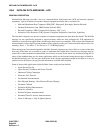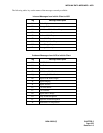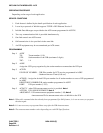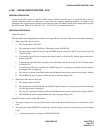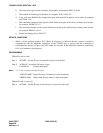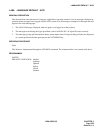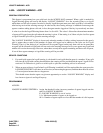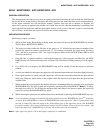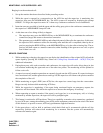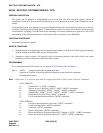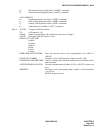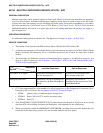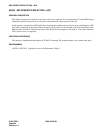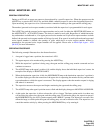
CHAPTER 5 NDA-24282 (E)
Page 262
Revision 1.0
MONITORING - ACD SUPERVISOR - ACD
Barging in on the monitored call:
1. Set up the monitor function as described in the preceding section.
2. While the agent is engaged in a conversation on the ACD line and the supervisor is monitoring, the
supervisor may press the MON/BARGE key. The ACD system will respond by displaying the prompt
BARGE?. To barge, the supervisor enters 1#. A three-way conference connection is now established.
3. Intrusion tones are provided to both the agent and the calling party prior to the conference connection, and
the supervisor’s MON/BARGE lamp will wink.
4. At this time one of two things is likely to happen:
a. The supervisor may press the RELEASE key or the MON/BARGE key to terminate the conference
connection (barge) and return to the monitor connection.
b. The agent may press the RELEASE key and relinquish control of the call to the supervisor. In this case,
the supervisor will continue to talk to the incoming caller until the call is completed, either by the su-
pervisor pressing the RELEASE key or the MON/BARGE key, or by the caller releasing first. The su-
pervisor will then return to a monitor connection, either listening to the agent on a new call, or quiet
tone if there is no call.
SERVICE CONDITIONS
1. While monitoring or barging, the supervisor can display the identification of the original ACD call and the
queue depth by pressing the LOGON key. Please see Calling Party Identification - ACD [C-70A] for
additional information.
2. During three-party calls such as transfers and conferences, the supervisor will not be able to barge in, but
will continue monitoring the agent and one of the other two parties. The monitoring will be updated to
follow assist calls.
3. A supervisor can only monitor agents that are currently logged onto the ACD system. If a supervisor barges
into a monitored call, and the agent releases and logs off, the supervisor will return to the previous mode at
the completion of the call.
4. While monitoring an agent’s PBX (non-ACD) line, the supervisor cannot barge into the conversation.
Barges can only be done while monitoring ACD lines.
5. While the supervisor is monitoring, if the agent being monitored begins an emergency request, the
supervisor will be released. This allows the supervisor to answer the emergency if necessary.
6. When requesting an agent to monitor, if the agent is not logged on, is on an emergency call, or is being
monitored by another supervisor, the supervisor will be prompted again.
7. This feature is restricted to ACD positions. There is no capability to monitor voice connections, conducted
by non-ACD users, among the remaining (non ACD) station equipment connected to the switch. The intent
of this feature is to provide a secure, ACD-only, performance appraisal function.
8. If the agent places a call on hold or performs switch hook flash and is reconnected with the call, the
supervisory position will release from monitoring for a moment. But the system will automatically
reconnect the monitor again.



